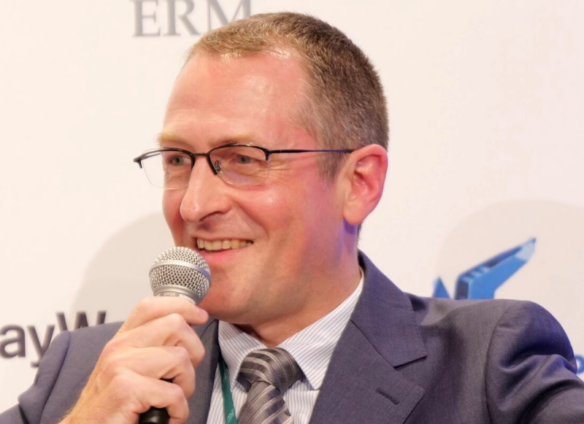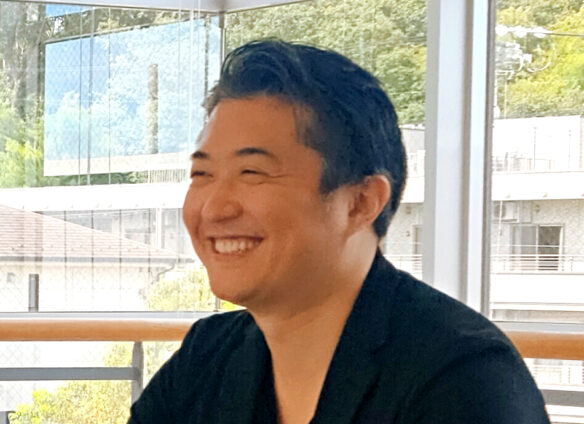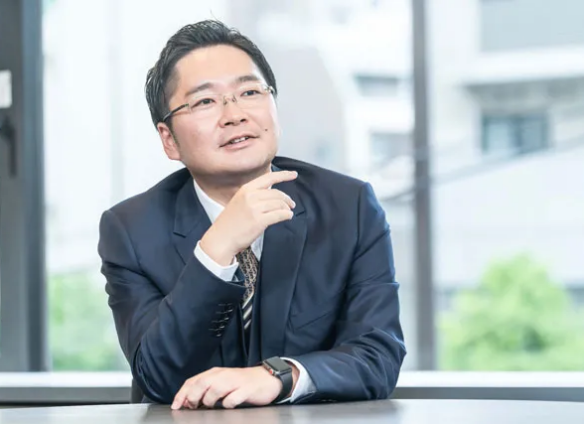While in their 50s and approaching the standard retirement age at Japanese companies, both Satoru Ikewada and Akira Komatsu had decided they needed a change of direction. Ikewada founded Nihon Insight Technologies in 1998, and Komatsu joined him there in 2014. The two golf buddies have ambitious plans to continue expanding the firm.
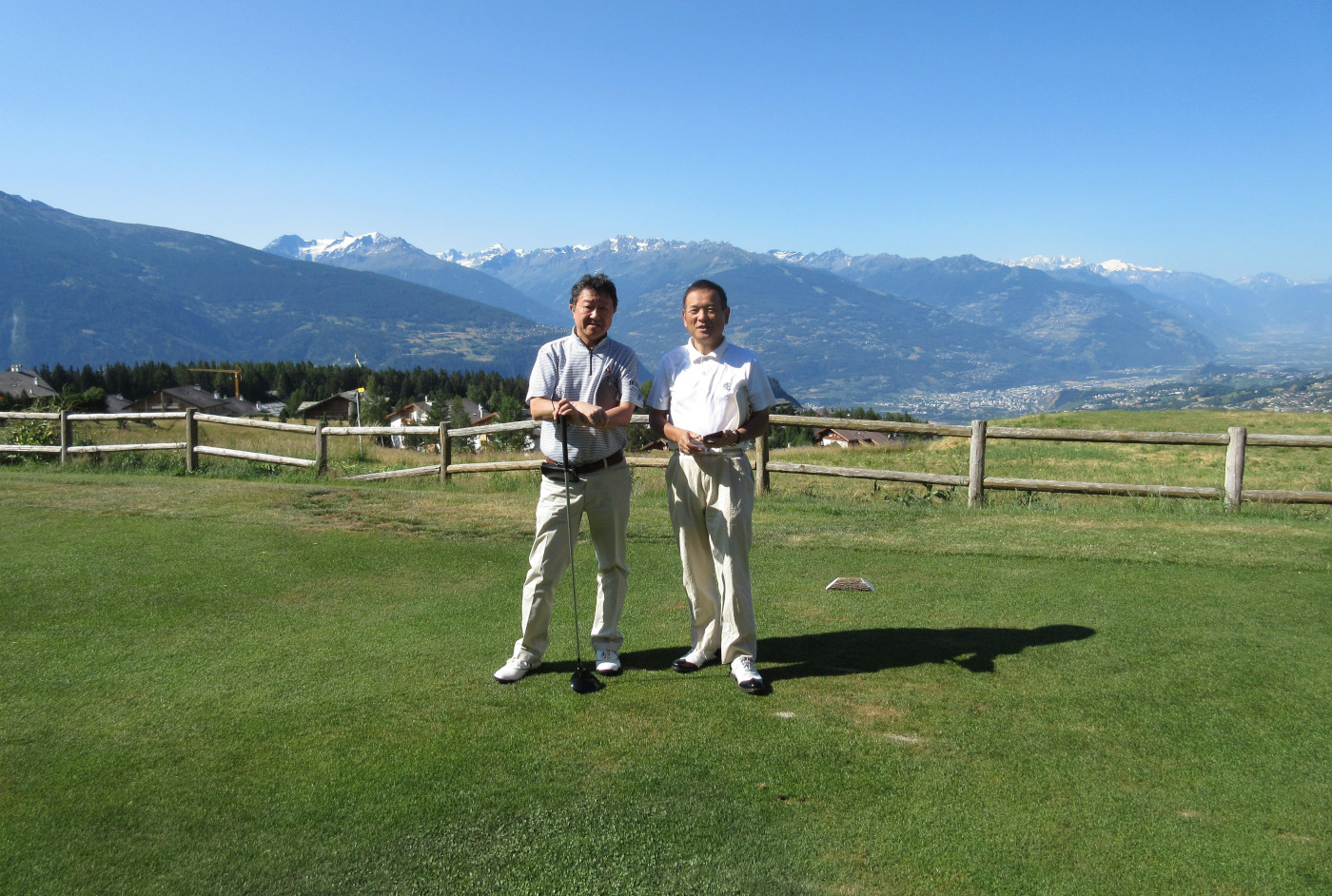
Akira Komatsu (L) and Satoru Ikewada (R) at the Golf Club Crans-sur-Sierre, Switzerland.
After graduating from Waseda University in 1979, Akira Komatsu joined Sony as a programmer and systems engineer, but soon realized he wanted to work overseas to take on a new challenge.
His chance came in 1984 with a posting to the financial headquarters of Sony’s European operations in Switzerland. Having been warned that Switzerland was very conservative and that he shouldn’t even wash his car on Sundays, Komatsu arrived on “a cloudy wintry day” with some trepidation.
Skiing and golfing; ramen and sushi
However, he soon warmed to his new home, finding the people friendly and adoring the easy access to world-class ski resorts. He confesses to being less enamoured with “relatively salty” local food and would travel to a Japanese restaurant in Luzern nearly every weekend, and sometimes even to London or Paris “to eat ramen and sushi.”
After getting married back in Japan, Komatsu says the second half of his six-year stint in Switzerland was “like a honeymoon,” and that his wife also thoroughly enjoyed her time in rural Rotkreuz. One of the many highlights was a ski trip with legendary Sony founder Akio Morita, who was visiting for the Davos annual meeting in 1989. Komatsu was also able to indulge his other passion, golf, at many of Switzerland’s courses.
Back in Asia and a new chapter
Returning to Tokyo in 1990, 16 years later Komatsu was transferred to Singapore, somewhere he found reminded him of Switzerland in terms of its cleanliness, orderliness and efficiency, but with more Japanese restaurants. There Komatsu managed IT systems and operations as Regional CIO, for the APAC region, Asean, Oceania, the Middle-East, India and South Africa until he returned to Tokyo again in 2010, working on global project management for Sony.
In 2014, at age 57, Komatsu began thinking about the fact that once he hit 60 he would be looking at either retirement or continued employment on less attractive terms. Komatsu had found his career “very interesting” thus far and was not quite ready to golf full-time, so began to “consider the next challenge.”
After meeting for lengthy discussions with Ikewada, he realised that Nihon Insight Technologies would be the next chapter in his working life. Having spent much of his time at overseas branches and subsidiaries of Sony, he didn’t find it a major adjustment to go from a corporate behemoth to a smaller venture, and enjoys the more direct interaction with clients. “Sony business division was like the customer when I worked at subsidiaries, but now I deal with real customers,” says Komatsu.
Nihon Insight Technologies’ founder
After graduating from the electrical engineering faculty at Chiba University, Satoru Ikewada began his career as a programmer and control engineer at what was then Yamatake-Honeywell in 1969. Ikewada joined Digital Equipment Corporation (DEC) in 1990 as the US computer giant was beginning to struggle in the rapidly shifting technology sector. When DEC was taken over by Compaq In 1998, Ikeweda was 52. While many people at that stage of their career might have considered looking for somewhere to quietly spend their last working years, Ikewada was truly just getting started.
He founded Nihon Insight Technologies Corp (NIT) as an IT services specialist that year with himself as the only employee and a mission to establish the best group of Java programming engineers in Japan. The firm expanded rapidly, opening a liaison office in Boston in 2004, a sales office in Yokohama the following year, and reaching 100 employees by 2006 and 1 billion yen in revenue in 2007.
Global shock and recovery
“We grew a lot in the first 10 years until the Lehman Shock [global financial crisis] struck and business dropped by about 40%,” recalls Ikewada. Undaunted, once the economy began to recover, NIT continued to grow, signing business partner agreement with Pegasystems and SmartBPM in 2011 and establishing a fully-fledged subsidiary in New York in 2012. In 2015, NIT became the first Asian partner of Lightbend (then Typesafe), co-founded by Martin Odersky, who created the Scala programming language while at the EPFL in Lausanne. “We visited Lausanne and discussed the partnership, it was a very quick decision,” explains Ikewada, who says the deal deepened NIT’s ties with Switzerland.
With companies increasingly focused on digital transformation (DX) based on PegaSystems, this has become a pillar of NIT’s operations. It opened an office in Nagoya this year and is now working with Toyota and auto parts maker Denso on their DX processes.
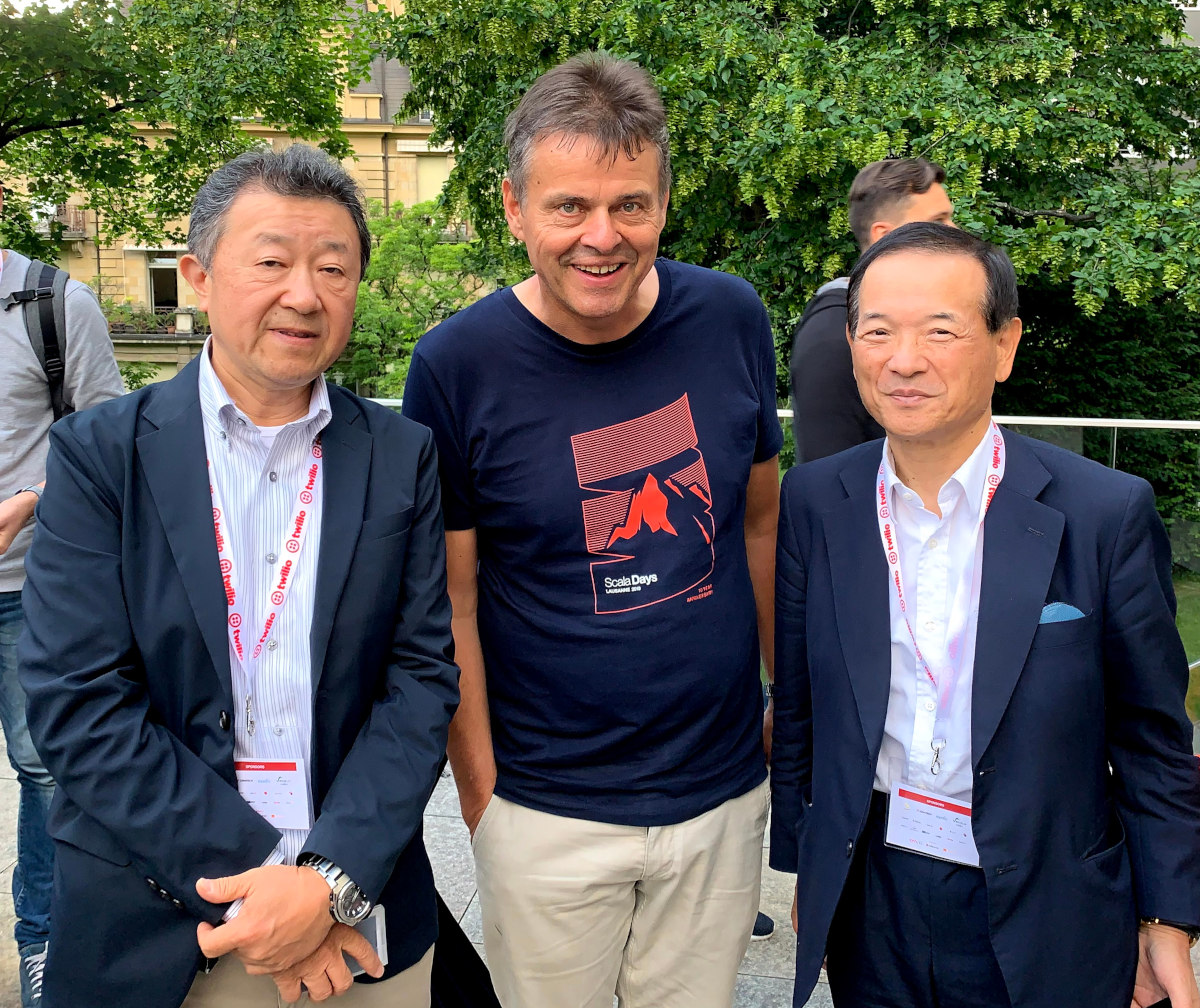
Akira Komatsu (L) and Satoru Ikewada (R) with computer scientist Prof. Martin Odersky
Far from finished
Well into his 70s, Ikewada is showing no signs of slowing down and is still brimming with new ideas, including opening a branch in Switzerland and a new division to import Swiss products including wines and cheese. “And we’re thinking about a Japan-Switzerland travel business focused on golfing trips,” he says. “There are a lot of rich people in Japan, but they don’t know how to spend money.”
Ikewada is also hatching a plan for a Ginza and New York Boot Camp to teach IT Technologies and business leadership skills in English and Japanese. He receives regular buyout offers for the company but says, “…it’s too much fun working with young people.”
NIT currently has around 200 employees, a number he expects to double in the coming years. “Many of my golf friends are in their 80s, and they tell me I’m still young. Maybe I’ll work until I’m 85, but probably as a consultant or chairman.”
Text: Gavin Blair for SCCIJ.



